#Bruno Cattaneo
Text
8 maggio … ricordiamo …
8 maggio … ricordiamo …
#semprevivineiricordi #nomidaricordare #personaggiimportanti #perfettamentechic
2023: Sergej Drejden, Sergej Simonovič Drejden, anche accreditato come Sergej Don’cov o Dontsov, è stato un attore russo e, in precedenza, sovietico attivo dal 1962 sino alla sua morte. Sergey è nato a Novosibirsk dal regista teatrale Simon Dreiden e dall’attrice Zinaida Dontsova, entrambi evacuati da Leningrado. Era ebreo da parte di padre. Dreyden ha elencato una serie impressionante di…

View On WordPress
#8 maggio#Adriano Micantoni#Barbara Lee Redfield#Barbara Payton#Bruno Cattaneo#Bruno Landi#Dana Plato#Dirk Bogarde#Dontsov#Elisa Mainardi#Fay Spain#Fred Ward#George Peppard#Jeanne Cooper#Lara Saint Paul#Marta DuBois#Morti 8 maggio#Nino Terzo#Personaggi morti 8 maggio#Piero Natoli#Ricordiamo#Rita Lee#Rita Lee Jones#Sergej Don’cov#Sergej Drejden#Sergej Simonovič Drejden#Vilmos Fried#W.M. Fox#William Fox#William Schallert
0 notes
Text
Don't Look Now (1973) Review
Don’t Look Now (1973) Review
Laura and John Baxter are a married couple who are grieving the death of their young daughter Catherine after a tragic accident are in Venice when they encounter a very strange pair of elderly sisters with one claiming to be psychic and brings a warning from the beyond!
⭐️⭐️⭐️
(more…)

View On WordPress
#1973#Adelina Poerio#Allan Scott#Ann Rye#BBC iPlayer#Bruno Cattaneo#Chris Bryant#Cleila Matania#Daphne Du Maurier#David Tree#Don&039;t Look Now#Donald Sutherland#Drama#Giorgio Trestini#Hilary Mason#Horror#Julie Christie#Leopoldo Trieste#Massimo Serato#Mystery#Nicholas Salter#Nicolas Roeg#Renato Scarpa#Review#Sharon Williams
0 notes
Text
Verdi - Un Ballo in Maschera - Re dell'abisso - Irene Minghini-Cattaneo (1930)
Orchestra e Coro del Teatro alla Scala di Milano Carlo Sabajno, conductor HMV, 1930
Irene Minghini Boschi was born at Lugo, Italy on 12 April, 1892 and was encouraged at the age of fourteen to pursue a musical career. Her studies continued for a number of years but were curtailed by the outbreak of World War I. In 1918 Irene made her debut at Savona in “Il Trovatore” and later in the season she appeared at Brescia in “Isabeau” and at Rome’s Teatro Adriano as the Countess in “Andrea Chenier”. She was dissatisfied with her own abilities and decided to move to Milan, where she was accepted as a student by Ettore Cattaneo, who was not only an eminent musicologist and conductor, but was the senior director of the house of Ricordi.
After a very brief period of study, Cattaneo announced that his protégé was ready, and in March of 1919 Irene debuted at Milan’s Teatro Carcano as Madelon in “Chenier” and a short time later, as Amneris. The Verdi opera was the subject of superb notices and before the year was out, she had also sung the Egyptian princess at Carrara and had appeared at Mestre.
Irene had, from the beginning, dropped her family name and appeared only as Irene Minghini, for reasons never explained. On 22 March, 1920 she married Maestro Cattaneo and immediately assumed his name for professional as well as personal reasons. After a very brief honeymoon, she appeared at Empoli on 6 April as La Cieca and in the summer she appeared at Siena in “Rigoletto” and later in “Aida” with Eva Pacetti. She returned to the Carcano in December for “Il Trovatore” with Ester Mazzoleni, Giovannoni and Francesco Maria Bonini and at year’s end in “Aida” with Oliva Petrella.
January of 1921 afforded her a very important debut, Preziosilla at the Teatro Petruzzelli of Bari and in the spring she appeared in “Il Trovatore” at Ravenna, Cesena and Forli. Milan’s Arena offered a contract for la Cieca and at Macerata she appeared as Amneris. The very prestigious Dal Verme of Milan presented Irene in “Il Trovatore” in October and on 29 December she debuted as la Cieca at Parma’s Teatro Regio with Tina Poli Randaccio, the young mezzo, Giannina Arangi Lombardi, Ismael Voltolini, Giuseppe Noto and Bruno Carmassi. There were ten performances and they served as Irene’s entry into the mainstream of Italian operatic life.
1922 was a very important year in her career, beginning at Spezia in “La Favorita” and continuing at Piacenza as Quickly in “Falstaff” with Mariano Stabile as well as la Cieca with Fidela Campigna, Arangi Lombardi, Francesco Merli and Vincenzo Guiccardi. At Florence, she appeared in “Falstaff”, at Palermo in “Aida” and at the Dal Verme, she again sang in “Il Trovatore” as well as with Alessandro Bonci in “Un Ballo in Maschera”. At Rome’s Teatro Augusteo in December she sang in the Manzoni Requiem with Mazzoleni, Bonci and Nazzareno De Angelis, and her name became headline news at the Italian capital, though she would never be engaged at that city’s premiere opera house. In 1923 Irene returned to Florence for “Falstaff” and sang at Cremona for the first time in “La Gioconda” and “Falstaff”. At Ancona in March she sang in “Falstaff” and in April she sang at the Naples Teatro San Carlo in the Manzoni Requiem. They would turn out to be her only appearances at that august theater. In May Irene returned to Ravenna for “Falstaff” after which she took an eight month sabbatical, reportedly for a pregnancy, though my research has uncovered no definitive information.
On 1 February 1924 Irene returned to the stage with appearances as Amneris at Cremona and a month later she debuted at Genoa’s Carlo Felice as Quickly in a cast that included Linda Cannetti, and Luigi Montesanto. At Vicenza she sang in the Manzoni Requiem with Lucia Crestani, Giuseppi Taccani and De Angelis, conducted by Sergio Failoni, and the engagement as so successful that all the soloists were immediately engaged for performances at Verona during the summer. Two performances were given at the Arena and two were moved to the Teatro Filarmonico when violent thunderstorms threatened Berrettoni conducted and Isora Rinolfi shared soprano honors with Crestani. The year also included performances of “Il Trovatore” at the Dal Verme, at Nice and at Genoa, “Aida” at Trieste’s Teatro Rossetti and the Manzoni Requiem at the Augusteo with Bianca Scacciati, Franco Lo Giudice and Bettoni.
Minghini Cattaneo returned to Genoa for additional performances of “Falstaff” in January 1925 and to the Augusteo for Beethoven’s Symphony #9 at the Augusteo in April. In May, at Pavia, she sang Dalila for the first time and in July she appeared in “La Gioconda” at the Verona Arena. Arangi Lombardi had graduated to the title role and Irene to the role of Laura for the first time. Bergamo heard her as Leonora de Guzman, Reggio Emilia was the scene of her first Adalgisas, partnered by Arangi Lombardi, and at Parma, she sang in “Tristan und Isolde” with Gina de Zorzi, Lavarello and Carlo Tagliabue and in “Norma” with Vera Amerighi Rutili, Renato Zanelli and Umberto De Lelio.
1926 began with performances of “Un Ballo in Maschera” at Parma and continued with “Norma” with Amerighi Rutili at Cremona, “Falstaff” at Modena, “Il Trovatore” at Como, and in March an extended stay at Catania’s Teatro Massimo Bellini. She debuted in “Norma” on 6 March with Amerighi Rutili, Cingolani and Manfrini, and on the 20th, she sang in “Aida” with Arangi Lombardi, Nicola Fusati, Armando Borgioli and Manfrini. At Ravenna, she sang Brangaene to the Isolde of Maria Llacer and Amneris to the Aida of Maria Carena and later in the season, Irene appeared in seven performances of “Il Trovatore” at Verona’s Arena. In the autumn, the Teatro Comunale of Modena offered a gala, extra season revival of “Norma” with Amerighi Rutili and at Bologna, Minghini appeared at Bologna in “Lohengrin” with Giuseppina Cobelli, Beniamino Gigli and Borgioli, in “Il Trovatore” with Arangi Lombardi, Aureliano Pertile and Borgioli and in “Aida” with Stani Zawaska, Merli and Angelo Pilotto. The year ended with eleven performances of “Il Trovatore” at Brescia’s Teatro Grande.
Her first engagement in 1927 was a stellar revival of “Aida” at Turin’s Teatro Regio. Eva Turner and Maria Carena shared the soprano role and Pertile sang Radames under the baton of Gino Marinuzzi. At Nice, Irene appeared in “Il Trovatore” with Llacer, Pedro Mirassou and Apollo Granforte and in “Aida” with Llacer, and Mirassou. In May, she sang in “Il Trovatore” with Arangi Lombardi, Merli and Gaetano Viviani at Florence. and while there, sang in two concert performances of the Beethoven Ninth Symphony. She was now the reigning mezzo at Verona and her season included eleven performances of “Aida” with Arangi Lombardi, Antonio Cortis and Viviani and two performances of the Beethoven Ninth.
The musicologist and commentator, Dr. Garcia Montes, reported of “Aida” in Record Collector: “What a wonderful voice and temperament that woman (Cattaneo) had. I will always remember her duet with Arangi Lombardi in the second act and her scene with Antonio Cortis in the last act. There existed some sort of rivalry or competition between the admirers of Arangi Lombardi and Minghini Cattaneo (both singers were good friends, though) and the storms of applause after each passage sung by the said singers lasted for minutes.”
At Cesena she appeared in the Manzoni Requiem and at Bologna she appeared in six performances of “La Gioconda”, again singing Laura. Those who attended the revival read in the program that Irene Minghini Cattaneo had been engaged to join the Melba-Williamson company on a six month tour to Australia in the spring of 1928, and that she would be joined by Giannina Arangi Lombardi, Toti dal Monte, Francesco Merli, Apollo Granforte and other Italian artists of the first rank in the most ambitious operatic undertaking in that continent’s history. The best laid plans!
Somewhere between Bologna and Australia, the Cattaneos made a very sharp turn. On 3 March 1928 Irene Minghini Cattaneo debuted at La Scala in “Il Trovatore” with Arangi Lombardi, Merli, Galeffi and Baccaloni under Ettore Panizza’s baton. On 16 May, as Arangi and Merli were singing at Melbourne before sold out houses, Cattaneo was engaged in the World Premiere of Pizzetti’s “Fra Gherardo” at La Scala with Florica Cristoforeanu, Trantoul and Baccaloni under Arturo Toscanini’s direction. Irene, at her husband’s urging, had accepted a contract to debut at London’s Covent Garden, and the Australian contract was dismissed. There were very serious and negative implications to this decision, and as we shall later see, though she remained attached to the Milan theater at intervals, her career at Italy’s important venues was pretty much at an end. On 15 June, Irene appeared at Covent Garden for the first time, singing in “Aida” with Dusolina Giannini, Pertile, Borgioli and Manfrini under the leadership of Vincenzo Bellezza. Her reviews were more than respectful. “Amneris was played with much dignity…by Madame Cattaneo” – Daily Telegraph. On the 28th, she sang Marina in a revival of “Boris Guduonov” with Feodor Chaliapin and her reviews were less kind, complaining of a much too broad Italianate approach. “It required Chaliapin to restore balance” – Daily Telegraph. In August Cattaneo appeared at Rimini in “Il Trovatore” with Carena and Giacomo Lauri Volpi and on Christmas Night, she returned to Parma for “La Gioconda” with Arangi Lombardi, Luigi Marini, Borgioli and Contini.
La Scala welcomed Irene for three important revivals in 1929: “Lohengrin” with Rosetta Pampanini, Pertile and Galeffi, “Un Ballo in Maschera” with Scacciati, Carosio, Pertile and Galeffi and “Aida” with Arangi Lombardi, Pertile and Galeffi. Elizabeth Rethberg appeared as “Aida” in several performances. When Toscanini brought the Scala company to Vienna and Berlin later in the spring, Cattaneo was not invited to perform, to the surprise of many. She was a difficult colleague, and the resentments over her failure to honor contracts were reaping their unhappy rewards. She did have a contract for Covent Garden, where she appeared in “Norma” and “La Gioconda” with Rosa Ponselle and as Marina with Chaliapin. Her reviews in the two Italian operas were quite exceptional. The Times: “In Madame Cattaneo was found a mezzo soprano whose rich tones could both contrast and combine with those of Ponselle.” They, however, did not get along at all and there were skirmishes behind the curtain as well as unpleasant exchanges at the footlights.
In late June, Irene returned to Italy, to a very long “vacation”. It was not until December that she appeared on stage. On 26 December Novarra’s Teatro Coccia presented her in “Samson et Dalila”. The career was a shambles. The winter of 1930 provided her with only one engagement in Italy, “Il Trovatore” at Padua. On 2 May, Ettore died at Milan and Irene observed a fifteen day mourning period before returning to Covent Garden for “Norma” with Ponselle and “Aida” with Turner. This time, bridled anger became open hostility. Ponselle received a number of reviews that commented on intonation problems in softer passages while the vocalism of Minghini Cattaneo was lavishly praised. There were very ugly scenes between the two divas, and though the revival was completely sold out, there were only two performances. With this engagement, Cattaneo’s career in London came to an end. In September, she traveled to Zurich for the Manzoni Requiem with Arangi Lombardi, Roberto d’Alessio and Antonio Righetti and in December she appeared at Pavia as La Gioconda for the only time in her career. It was not a success. On New Year’s Eve, Irene sang Azucena at Bologna’s Teatro Duse. It was in 1930 that she recorded “Il Trovatore”, a defining performance which clearly shows that her problems upon the stages of the world had nothing to do with diminished vocal resources. As a compensation, it was known that Maestro Cattaneo, through his connections to Ricordi, had left Irene a great deal of money, an estate that allowed her to maintain an opulent villa at Rimini, where she would spend most of her time.
In April 1931, Irene appeared at the Duse in “Norma” and in May, she joined Amerighi Rutili in a spectacularly received revival of the Bellini opera at Forli. There were three performances and not a ticket was to be found. Cattaneo, in particular, was singled out for superlatives; Il Corriere Padano commented on “her commanding stage image, her gorgeous voice and her perfect intonation.” In June, she continued her succession of engagements as Italy’s minor theaters with “Il Trovatore” at Siena, and in August she returned in glory to Verona’s Arena for Elena in “Mefistofele” with Scacciati, Angelo Mighetti and De Angelis. Again, she decided after five performances that the role really had too high a tessitura, and she never again attempted it. In the autumn, Irene, appeared at Pistoia and at Athens in “Lohengrin”, and on 26 December she closed out the year at Catania in “Norma” with Campigna, Jesus de Gaviria and Antonio Righetti.
The winter of 1932 was spent at Cairo and Alexandria in “Aida”, “La Gioconda” and “Samson et Dalila” and in March she sang in “Norma” at Livorno with her nearly constant partner, Amerighi Rutili. It was not until December that she returned to the stage when she sang Ulrica at La Scala, partnered by Carena, Carosio, Pertile and Galeffi. There were five performances.
1933 was somewhat better for the nearly neglected mezzo. Parma hosted her in “Aida” and “La Gioconda”, Genoa’s Carlo Felice welcomed her back in “La Gioconda” with Gina Cigna, Alessandro Ziliani, Cesare Formichi and Corrado Zambelli, Pistoia offered Cattaneo and Cigna in “Norma”, and at Cagliari, in December, Irene sang in “Aida” with Amerighi Rutili, Luigi Marletta and Granforte. In January 1934 the ensemble brought the Verdi work to Sassari.
Piacenza engaged Cattaneo for “Aida” and “Il Trovatore, both with Arangi Lombardi, in February and in March there was a revival of “Il Trovatore” at Turin’s Regio with Carena, Lauri Volpi and Carlo Morelli. A long summer tour throughout Italy’s provinces took Irene’s time from the middle of June until September. The opera was “Norma”, the title role was shared by Amerighi Rutili and Maria Pedrini, and the towns visited were, Civitavecchia, Grosseto, Livorno, Siena, Montemarchi, Foligno, Frosinone, L’Aquila, Pescara, Foggia, Lecce, Avellino and four hugely applauded performances at Rome.
In September she returned to Bari for “Aida” with Pacetti and Giovanni Martinelli, who was making one of his very rare appearances in Italy, and in December she closed the year at Bologna’s Corso in “Lohengrin”. Where was the Rome Costanzi, where was the Naples San Carlo, why had Scala shunned her in the great mezzo roles for six years? Where were the Barcelona Liceo, the Lisbon Sao Carlo, the major German and Austrian theaters, where was Paris?
In fact, Paris was her next stop, but it did not happen until July of 1935. Tullio Serafin conducted a celebrated revival of “Falstaff” with Cattaneo, Ines Alfani Tellini, Pia Tassinari, Nino Ederle, Stabile and Ernesto Badini. In October she traveled to Venice, where, at the Palazzo Ducale she participated in the Manzoni Requiem with Margherita Grandi, Alessandro Granda and the bass, Ferrari. In November she finally sang at her birthplace, Lugo, in “Il Trovatore” with Pedrini, Breviario and Viviani. 1936 found Irene at only two theaters, Padua’s Verdi for “Aida” and Modena’s Comunale for “Lohengrin” with Licia Albanese, Pablo Civil, Viviani and Mongelli.
In 1937 she sang in “L’Arlesiana” and “Un Ballo in Maschera” at Como, in “Il Trovatore” at Modena and in the Manzoni Requiem at Trieste’s Teatro Verdi. 1938 included her only attempt at the Walkuere Brunnhilde, which was presented at Ravenna, “Aida” at Milan, Ostiglia, Genoa’s Piazza Vittoria, Catania and Ventimiglia, all outdoors. She also sang in “Norma” at Pesaro with Cigna, Ettore Parmeggiani and Flamini.
1939 was a rather interesting year for Irene. She sang in “L’Arlesiana” at Trieste with Tito Schipa, in “Re Hassan” at Venice’s Fenice with Cloe Elmo and Tancredi Pasero and in “Adriana Lecouvreur” for the first and only times in her career when she joined Pacetti, Galliano Masini and Gino Vanelli at Livorno’s Teatro Goldoni. “Il Trovatore” at Bologna and “Un Ballo in Maschera” at Milan’s Castello Sforzesco completed her season.
!940 saw her at only two cities; Pavia, where she sang in Vittadini’s “Anima Allegra” and “La Gioconda” when she returned to the role of La Cieca, and later in the year, Bolzano for additional performances as Cieca. Her farewell was assumed for many years to have been as La Cieca at La Scala in February of 1941, but she is known to have sung at San Sebastian, Spain in September of 1942. “Il Trovatore” was presented with Cigna, Irene and Lauri Volpi.
It was Lauri Volpi, in his “Voci Parallele” who wondered why Irene Minghini Cattaneo had achieved so little with such a prodigious talent. He praised her physical form, her acting abilities, and, most of all, her remarkable vocal talents. To leave this discussion with only a comment that she was the victim of an unpleasant disposition and bad decisions in the early years is not reasonable. Certainly, others were far more difficult, and they are among the giants of the twentieth century. No singer made unfailingly wise choices in unfolding their careers. I do not have an answer, except perhaps, that she knew best what she wanted from her career and her life, and that the picture is the one that she chose to paint.
It should be noted that, despite the fact that every previous biographical sketch has declared that she sang in South America, and that she did so with great success, neither statement is true.
Irene Minghini Cattaneo was found dead at her villa on 24 March 1944, the victim of a bombing attack by Allied forces just before the final surrender of the Italians.
#classical music#opera#music history#bel canto#composer#classical composer#aria#classical studies#maestro#chest voice#Irene Minghini-Cattaneo#mezzo-soprano#Un Ballo in Maschera#Giuseppe Verdi#Verdi#La Scala#classical musician#classical musicians#classical voice#classical history#classical art#musician#musicians#music education#music theory#history of music#historian of music#diva#prima donna
1 note
·
View note
Text
Milano celebra con la presenza di Sergio Mattarella i 150 anni dalla morte di Alessandro Manzoni

Milano celebra con la presenza di Sergio Mattarella i 150 anni dalla morte di Alessandro Manzoni
Il presidente della Repubblica, Sergio Mattarella, ha presenziato alla deposizione di una corona di fiori, con rose bianche e rosse, sulla tomba dello scrittore Alessandro Manzoni, di cui oggi ricorrono i 150 anni dalla morte, al Cimitero Monumentale di Milano.
Ad accogliere il capo dello Stato, tra gli altri, il presidente della Regione Lombardia, Attilio Fontana, il prefetto di Milano, Renato Saccone e la vice sindaco di Milano, Anna Scavuzzo e il vicesindaco della Città Metropolitana Francesco Vassallo. Dopo la deposizione della corona sulla tomba dello scrittore l'assessore Sacchi ha illustrato al presidente della Repubblica alcuni cenni storici sul Famedio, il pantheon dove sono ricordati coloro che hanno dato lustro alla città. La tomba di Alessandro Manzoni si trova proprio al centro della struttura. Lo scrittore milanese è stato il primo ad essere traslato nel Famedio, nel 1883, a dieci anni dalla sua morte.
Nel Famedio sono ospitati i resti di otto personaggi, gli altri sono iscritti. Negli altri due sarcofaghi presenti nella grande sala si trovano Carlo Cattaneo e Luca Beltrami; mentre quattro colombari di fascia a lato ponente custodiscono i resti di Salvatore Quasimodo, Carlo Forlanini, Bruno Munari e Leo Valiani. In un colombaro di fascia a lato, da novembre 2021, riposa Carla Fracci, prima donna ad essere accolta nel Famedio dopo 155 anni dall'inaugurazione del Cimitero Monumentale.
Il momento principale della giornata sarà nel pomeriggio, alle 16, quando Mattarella si recherà in visita alla Casa Manzoni, in via Gerolamo Morone, 1, dove l'autore de 'I promessi sposi' ha vissuto fino alla sua morte.
Lì la Civica Orchestra di Fiati eseguirà l'inno nazionale in cortile. Nella sala rossa, dove sarà presente anche una rappresentanza di studenti e studentesse dei due istituti scolastici cittadini intitolati ad Alessandro Manzoni, si svolgeranno i saluti istituzionali da parte del sindaco di Milano, Giuseppe Sala, del presidente della Regione Lombardia, Attilio Fontana e del presidente di Casa Manzoni, Angelo Stella.
Previste poi un'orazione del professor Giovanni Bazoli, presidente onorario della casa museo e una lettura dell'attrice Eleonora Giovanardi.
La città di Milano celebra -dunque- alla presenza del presidente della Repubblica Sergio Mattarella, il 150esimo anniversario della morte di Alessandro Manzoni.
"Oggi, a 150 anni di distanza, la figura di Alessandro Manzoni si staglia come una delle personalità più rilevanti dell'intera storia della nostra città e del nostro Paese" - ha ricordato il sindaco di Milano, Giuseppe Sala nel suo podcast quotidiano 'Buongiorno Milano' dedicato allo scrittore - "Non è personaggio semplice, certamente. Ma non è neanche quella figura impolverata e lontana dalla vita che una certa tradizione accademica e pubblicistica italiana ha consegnato all'opinione pubblica e, soprattutto, ai più giovani".
"Alessandro Manzoni è un vero Milanese d'Europa, uno scrittore che da piazza Belgioioso ha esercitato tramite le sue opere e il suo pensiero un fascino e un interesse difficilmente imitabili nella storia del nostro Paese", ha aggiunto.
Milano per celebrare i 150 anni dalla morte dello scrittore ha promosso un palinsesto di eventi che coinvolge le principali istituzioni culturali della città, da Casa Manzoni, al Duomo, alla Pinacoteca di Brera.
"Si tratta dunque di un'occasione preziosa, che verrà inaugurata oggi dalla visita del presidente della Repubblica a Casa Manzoni a ribadire la riconoscenza che l'Italia e la sua lingua vogliono tributare a questo grande figlio della nostra città", ha concluso il sindaco.
Per la commemorazione, Poste Italiane comunica che viene emesso dal Ministero delle Imprese e del Made in Italy un francobollo commemorativo di Alessandro Manzoni, nel 150° anniversario della scomparsa, relativo al valore della tariffa B pari a 1,20 euro.
Il francobollo è stampato dall'Istituto Poligrafico e Zecca dello Stato S.p.A., in rotocalcografia, su carta bianca, patinata neutra, autoadesiva, non fluorescente. Bozzetto a cura di Rita Fantini. La vignetta raffigura un ritratto di Alessandro Manzoni delimitato in basso da un libro aperto su cui campeggia la firma autografa dello scrittore.
Completano il francobollo le date "1785-1873", la scritta "Italia" e l'indicazione tariffaria "B". L'annullo primo giorno di emissione sarà disponibile presso lo sportello filatelico dell'ufficio postale Milano 24....
#notizie #news #breakingnews #cronaca #politica #eventi #sport #moda
Read the full article
0 notes
Text
100 attivisti a Rebibbia per realizzare un murales contro il cambiamento climatico
“Accendiamo il futuro”, Roma 14 e 15 febbraio. Due giorni con protagonista la community di oltre 100 attivisti green under 30 delle cooperative di tutto il territorio, insieme ad alcuni studenti del Liceo Artistico “Marco Polo Cattaneo” di Cecina (Livorno) e del Liceo Linguistico Giordano Bruno di Roma impegnati in un flash mob luminoso in Piazza del Popolo e nella realizzazione di un murales…

View On WordPress
0 notes
Photo

Bruno Munari at 'Alta Tensione', Galleria Vismara, Milano, 1991 [© Archivio Fotografico Enrico Cattaneo. © Corraini Edizioni, Mantova]
#art#sculpture#structure#photography#exhibition#bruno munari#vismara arte#enrico cattaneo#archivio fotografico enrico cattaneo#corraini#1990s
38 notes
·
View notes
Photo
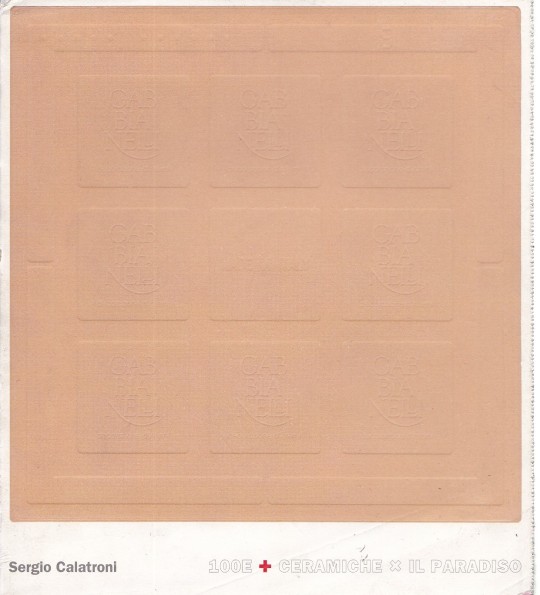
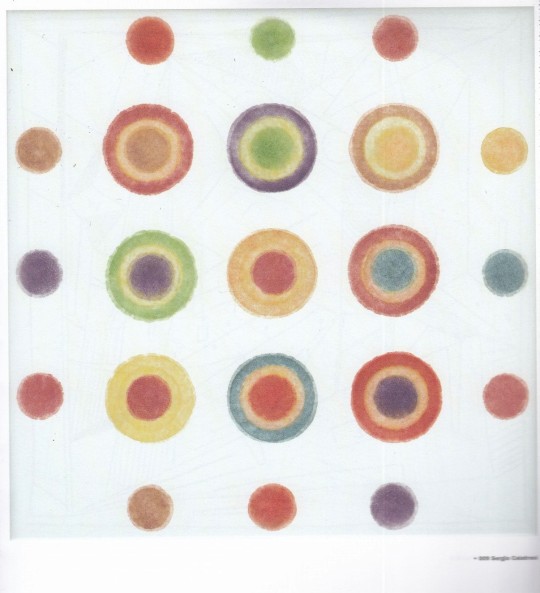
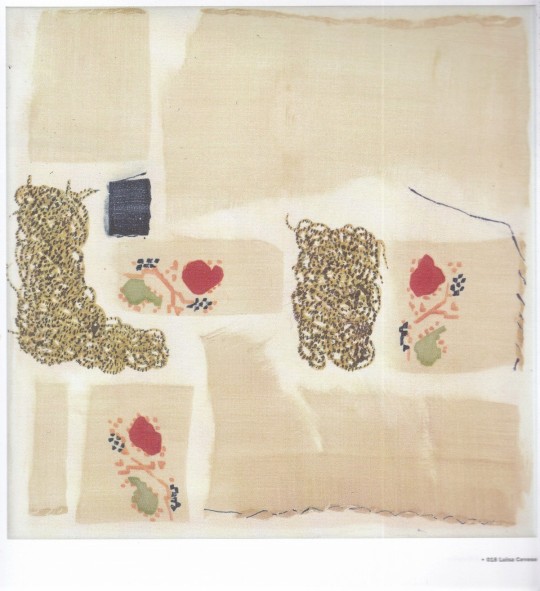



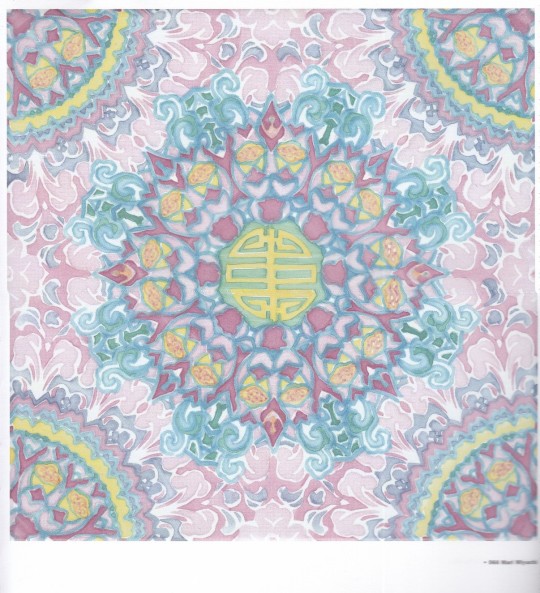
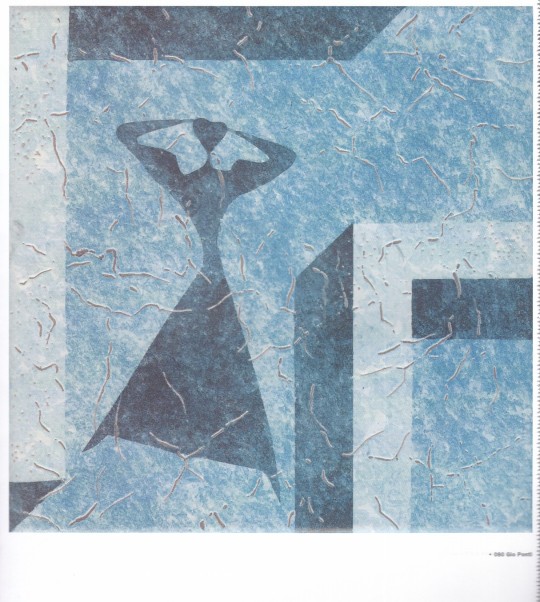

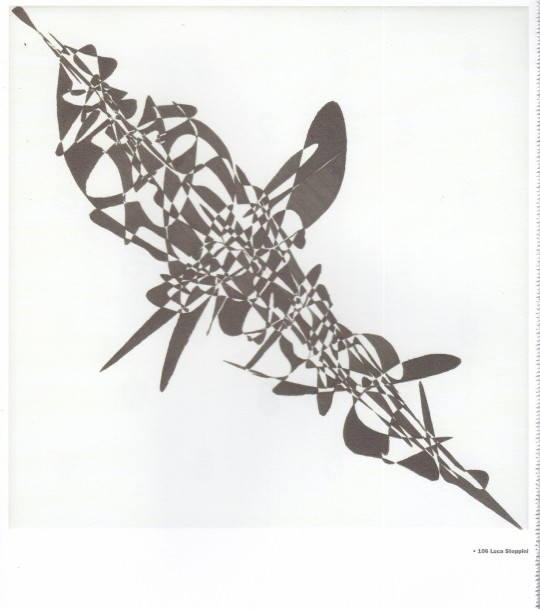
100E + Ceramiche X il Paradiso
Artisti insieme per costruire una scuola
a cura di Sergio Calatroni
Sergio Calatroni Artroom , Milano 2008, 339 pagine, brossura
euro 35,00
email if you want to buy :[email protected]
Catalogo della mostra tenuta a Milano, Fondazione Stelline, Sala del Collezionista, 14-19 febbraio 2008 exhibition & no profit auction
Artisti, designer e architetti hanno ideato piastrelle in duplice esemplare per la realizzazione di un mosaico di due metri per due sul tema “Il Giardino dell’Eden”, e recentemente andate all’asta per finanziare - su iniziativa della Gabbianelli, Decorazione d'Interni - lo sviluppo della nuova Scuola del Centro di Studi e Ricerche Internazionali MAAAM (Morocco All Anonymous Art Marrakech). Ideatore della mostra e presidente del MAAAM e è l’architetto Sergio Calatroni.
Quelle esposte al MIC sono le seconde copie delle piastrelle appositamente realizzate per questa mostra e per quella che seguirà alla Fondazione Orestiadi di Gibellina. Il motivo ispiratore delle ceramiche vuole essere la rilettura del tema del Giardino dell'Eden (Genesi, II) e la sua restituzione simbolica mediante l'uso della geometria, secondo l'antica tradizione islamica.
“Eden” è una parola sumera che significa parco, giardino in pianura. Secondo la tradizione, questo luogo si trovava ad oriente della Palestina. Nel rigoglioso giardino crescevano due alberi: l'albero della conoscenza del bene e del male e l'albero della vita. Il giardino è dunque il simbolo del Paradiso Terrestre.
Le ceramiche sono esposte accanto al bozzetto originale datato e firmato dall'autore.
Gli artisti
Sergio Asti, Enrico Baleri, Antonio Ballista, Luigi Baroli, Lapo Binazzi, Julia Binfield, Jean Blanchaert, Virginia Cabassi Poma, Sergio Calatroni, Tassili Calatroni, Santi Caleca, Maurizio Cannavacciuolo, Lidia Carbone, Cy Carre', Lella Castaldo, Alice Cattaneo, Silvio Cattani, Luisa Cevese, Giovanni Chiaramente, Roberto Ciaccio, Aldo Cibic, Geppino Cilento, Antonella Cimatti, Antonio Colombo, Riccardo Dalisi, Tiziano Dal Pozzo, Aldo Damioli, Guido Daniele, Celeste Dell'Anna, Aurora Di Girolamo, Nathalie Du Pasquier, Era Ora Intelligence, Marta Fernández, Marco Ferreri, Pietro Finelli, Letizia Fornasieri, Enrico Francolini, Amalia Garufo, Dario Ghibaudo, Horatio Goni, Ezio Grisanti, Alessandro Guerriero, Guido Guidi, Pino Guidolotti, Takuo Kawashima, Ugo La Pietra, Colomba Leddi, Corrado Levi, Nicola Licitra, Salvatore Licitra, Marco Lodola, Paolo Lomazzi, Daniele Lombardi, Tommaso Maggio, Federico Maggioni, Luigi Mainolfi, Ugo Marano, Enzo Mari, Massimo Mariani, Barbara Martucci, Tullio Mazzotti, Alessandro Mendini, Fulvia Mendini, Ministero del Gusto, Luca Missoni, Mari Miyachi, Muga Miyahara, Axel Müller-Schöll, Yoshiaki Nishino, Alek O., Ohya Family, Original Designers 6R5, Annibale Oste, David Palterer, Antonio Paradiso, Massimo Piani, Steve Piccolo, Giuseppe Pino, Pier Paolo Pitocco, Gio Ponti, Lisa Ponti, Kuno Prey, Daniela Puppa, Franco Raggi, Bruno Rainaldi, Amato Rak, Prospero Rasulo, Roberto Remi, Guglielmo Renzi, Rohka, Alessandro Rossetti, Enzo Roveri, Giovanni Sabatini, Denis Santachiara, Fausto Santini, Luca Scacchetti, Patrizia Scarzella, Fabrizio Sclavi, Roberto Serino, Daniel Silver, Marina Sinibaldi Benatti, Maddalena Sisto, Franca Soncini, George Sowden, Giorgio Spiller, Luca Stoppini, Nello Teodori, Fabius Tita, Clino Trini Castelli, Maurizio Turchet, Guido Venturini, Matteo Vercelloni, Chung Yi Yang, Giorgio Vigna, Nanda Vigo, Valerio Vinaccia, Marco Zanuso Jr., Gianfranco Zavalloni.
08/01/21
orders to: [email protected]
ordini a: [email protected]
twitter: @fashionbooksmi
instagram: fashionbooksmilano, designbooksmilano tumblr: fashionbooksmilano, designbooksmilano
8 notes
·
View notes
Link

dalla mappa e dall'archivio di infoantifa sono 70 le aggressioni imputabili a Casapound come associazione e ai suoi militanti:
Mappa delle aggressioni fasciste in Italia
21.02.19 Centocelle, gli studenti del Benedetto Da Norcia denunciano: “Aggrediti da CasaPound” ·
22.09.18 Aggressione al corteo antirazzista di Bari, due feriti
08.09.18 Ostia: capogruppo del M5S ferito durante occupazione di Casapound negli uffici del X Municipio
13.05.18 Milano Aggredite due donne. Tra i picchiatori fascisti la candidata di Casapound ·
13.05.18 Roma, al liceo Benedetto da Norcia "raid squadrista" di Blocco studentesco. Aggrediti due studenti ·
12.05.18 Picchiarono due ragazzi fuori da un locale, indagati dodici esponenti di CasaPound ·
07.05.18 Pestato a sangue al pub dei neofascisti
05.05.18 Qualiano, rissa in Consiglio comunale: colpiti due consiglieri.
18.02.18 Perugia, botte e coltellate mentre attaccano manifesti elettorali di Potere al Popolo
15.02.18 Tre ragazze aggredite dai fascisti di Casapound “difensori delle donne”
11.02.18 "Minacciati con coltelli e tirapugni: ecco cosa è successo"
06.02.18 Blitz di Casapound in ospedale contro i senzatetto: “Qui solo pazienti”. E il candidato di Fdi alla Camera esulta ·
27.01.18 Picchiati davanti a scuola dai militanti di Blocco studentesco
14.01.18 Genova: Antifascista accoltellato da militanti di Casapound ·
22.12.17 Parlamentare toscano Denuncia “Mia figlia picchiata da un militante di destra”
11.12.17 Devastato locale preso a pugni il gestore
23.11.17 Aggressione Un ferito davanti a CasaPound ·
02.10.17 Genova, aggressione a militante del Pcl: denunciati due esponenti dell'ultradestra
17.09.17 Aggressione fascista a Lanciano ·
12.10.17 Via delle Sirene Candidato di FI aggredito da CasaPound a Ostia ·
23.11.17 Istituto Mazzocchi aggredito studente
13.10.17 Piazza Ingrao fronte Darsena aggredito un ragazzo col tirapugni
19.07.17 Pavia aggressione: Rete antifascista denuncia Casapound ·
14.06.17 Aggressione fascista a Pordenone ·
05.04.17 Ragazzo aggredito da CasaPound: "Sono caduto nel Naviglio, mi lanciavano sassi e bottiglie"
12.03.17 Sassari, i membri di un circolo politico aggrediti a bastonate
11.02.17 Viterbo, spedizione punitiva Un commento su Facebook a una vignetta satirica su Casapound e viene pestato a sangue. ·
01.02.17 Ostia, un ragazzo aggredito da cinque militanti di Casapound
16.11.16 Trento Studenti liceali aggrediti
17.07.16 Bolzano, pestaggio notturno: la vittima accusa Casapound
26.05.16 Militante di Casapound colpisce rappresentante degli studenti del liceo Labriola
18.05.16 Aggressione fascista al Pigneto. “È stata Casapound” ·
14.05.16 Pestaggi a Aosta indagati di Casapound 6 contro 1. Nella stessa notte testate a un altro uomo
03.04.16 Tentato omicidio a Trento per mano fascista
21.02.16 Rappresentante degli studenti aggredito da neofascisti · Tor Vergata:
02.02.16 Ragazzini presi di mira da esponenti di Casapound ·
29.01.16 Gravissima aggressione studenti presi a martellate a Napoli
16.01.16 Giovane aggredito nei pressi della sede di "CasaPound"
15.12.15 Aggressione neofascista al liceo Tenca
18.11.15 Aggressione fascista di Casapound ai danni di una studentessa ·
15.11.15 Torino Strappa un volantino, studente del Cattaneo preso a sprangate ·
10.10.15 Barletta Aggressione fascista a studente sedicenne ·
02.10.15 Aggressione fascista a Napoli
29.07.15 Courmayeur, 15enne picchiato da militante Casapound ·
19.06.15 Studenti aggrediti, denunciati a Firenze due militanti di CasaPound
22.04.15 Agguato a studentessa del Mamiani, 16 anni aggredita e picchiata sotto casa da fascisti
22.03.15 Bolzano Pestaggio, denunciati due di CasaPound. Picchiato anche un clochard
20.03.15 Vignanello Tre feriti da coltellate di Casapound
16.03.15 Napoli Attivista dei collettivi universitari aggredito da neofascisti a cinghiate ·
13.03.15 Trento «Picchiato in città da un gruppo di estrema destra» ·
11.02.15 I militanti del Bruno: "Dopo il corteo speronati con l'auto dai fascisti"
5.02.15 Aggressione fascista a Piscinola · Napoli
18.01.15 Aggressione fascista al Csa Dordoni di Cremona Ferito gravemente un compagno ·
30.11.14 Cremona, aggressione fascista!
8.11.14 Blitz di Borghezio e Casa Pound nella scuola degli immigrati L’aggressione in un quartiere della periferia capitolina
30.10.14 Pestaggio e accoltellamento tra Trento e Rovereto, la Questura indaga
22.10.14 Trento Aggrediti di notte da incappucciati ·
25.10.14 Torpedo denuncia una "aggressione squadrista" e incolpa Casapound
16.10.14 Roma Mamiani, studente picchiato fuori dal liceo: "Aggredito da dieci ragazzi di estrema destra"
9.10.14 Napoli, aggressione fascista al Liceo Sannazaro
6.09.14 Ennesima aggressione fascista a Napoli ·
8.08.14 Santa Severa: 21enne pestato perché di sinistra Denti rotti e labbro ferito
19.07.14 Foggia, pestano a sangue due prostitute. Uno degli aggressori è un fascista ·
23.06.14 Trento - Aggredito attivista del centro sociale Bruno da una decina di militanti di Casapound ·
16.05.14 Aggressione squadrista in biblioteca
15.04.14 Frascati: studente aggredito dai fascisti di Blocco Studentesco ·
08.02.14 Tre episodi di violenza: in sei al pronto soccorso, due sono ragazze.
02.03.14 colpito un 50enne con un calcio al volto ferito gravemente.
04.03.13 Picchiato e derubato dell’Ipad
24 notes
·
View notes
Photo
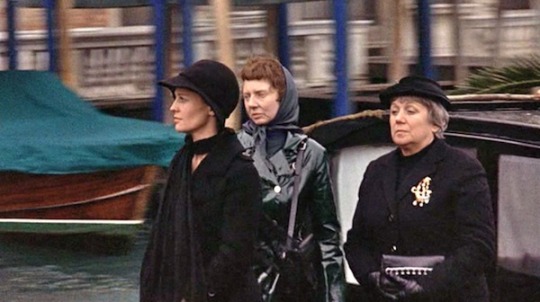
Julie Christie, Hilary Mason, and Clelia Matania in Don't Look Now (Nicolas Roeg, 1973)
Cast: Julie Christie, Donald Sutherland, Hilary Mason, Clelia Matania, Massimo Serato, Renato Scarpa, Leopoldo Trieste, Giorgio Trestini, David Tree, Ann Rye, Nicholas Salter, Sharon Williams, Bruno Cattaneo, Adalina Poerio. Screenplay: Allan Scott, Chris Bryant, based on a story by Daphne Du Maurier. Cinematography: Anthony B. Richmond. Art direction: Giovanni Socol. Film editing: Graeme Clifford. Music: Pino Donaggio.
A beautifully textured film, Don't Look Now fills every frame with portents, making it one of the most influential "horror films" of all time. And like the best horror films, like Psycho (Alfred Hitchcock, 1960) or Rosemary's Baby (Roman Polanski, 1968), it doesn't rest content with simply scaring people. It's unsettling mostly because it preys not on our nerves but on our conscience, needling our sense of guilt, our self-consciousness about grief, our denial in the face of the inevitability of death. Its supernatural element is preposterous, but we accept it because each of us has our preposterous superstitions, our wishful fantasies, our falling away from logic and reason. Nicolas Roeg accomplishes a near-perfect integration of story and setting in his use of Venice, a beautiful, historic city, riddled with decay and threatened by time and tide. In his hands, it becomes a correlative for the dance between acceptance and despair that the Baxters, Laura (Julie Christie) and John (Donald Sutherland), are treading as they try to survive the death of their daughter. I think the film falls apart a little at the end, with too much flashbackery to summarize what has happened to the Baxters, and it could have been leavened with the kind of wit that Hitchcock and Polanski resorted to in their films, but I'd call it a near-miss classic.
0 notes
Text










Colosseo gibt es hier auch, aber auch eine Snackbude am Park, Brücken, Fluss und Farben...lauter Wiederholungen, nix neues hinzuzufügen, also textlich...aber wer war Carlo Cattaneo? ein Freund von Bruno Banani??
Verona im Oktober 2021
0 notes
Link
0 notes
Text
Lecco, in mostra alla Fototeca le incisioni di opere d'arte dal Rinascimento al Romanticismo

Lecco, in mostra alla Fototeca le incisioni di opere d'arte dal Rinascimento al Romanticismo.
Giovedì 24 novembre sarà inaugurata nella sala conferenze di Palazzo delle Paure la mostra “L’arte dell’incisione: grandi maestri nelle collezioni di grafica del Sistema Museale Urbano Lecchese”, realizzata dal Si.M.U.L. e curata da Barbara Cattaneo, Matilde Bianchi ed Elena Negri, che troverà spazio dal 25 novembre al 15 ottobre 2023 nella sezione di Grafica e Fotografia di Palazzo delle Paure.
L’esposizione nasce dall’intento di far conoscere al pubblico la ricca raccolta di stampe e incisioni del Si.M.U.L., composta da circa 3.000 esemplari, che può essere fruita dal pubblico solo con mostre temporanee ad hoc, attraverso la scelta dei diversi nuclei tematici presenti. L’intento è quello di mostrare una raccolta inedita di acqueforti, xilografie, litografie e incisioni a bulino, tecniche artistiche elaborate già nell’antichità e utilizzate per la riproduzione di opere d’arte a partire dalla seconda metà del XV secolo. Le incisioni che verranno esposte, dopo un lungo lavoro di catalogazione e restauro, riproducono alcune tra le più importanti opere d’arte realizzate da famosi artisti italiani ed europei fra il XV e il XVIII secolo.
I nuclei tematici selezionati per la mostra riguardano i grandi artisti del Rinascimento italiano ed europeo (Botticelli, Mantegna, Raffaello, Michelangelo, Tiziano, Rubens), il Vedutismo (Carlevarijs e Piranesi), il Neoclassicismo e il Romanticismo (Andrea Appiani, Bartolomeo Pinelli e Francesco Hayez) e la Ritrattistica (con incisioni di ritratti di celebri personalità italiane come San Francesco, Leonardo da Vinci, Giuseppe Garibaldi e Andrea Appiani).
Inoltre, in occasione della mostra è stata ideata una speciale attività didattica sull’arte incisoria, per le scuole di ogni ordine e grado, con la collaborazione dell'artista incisore Bruno Biffi....
#notizie #news #breakingnews #cronaca #politica #eventi #sport #moda
Read the full article
0 notes
Link
0 notes
Link
0 notes
Link
0 notes